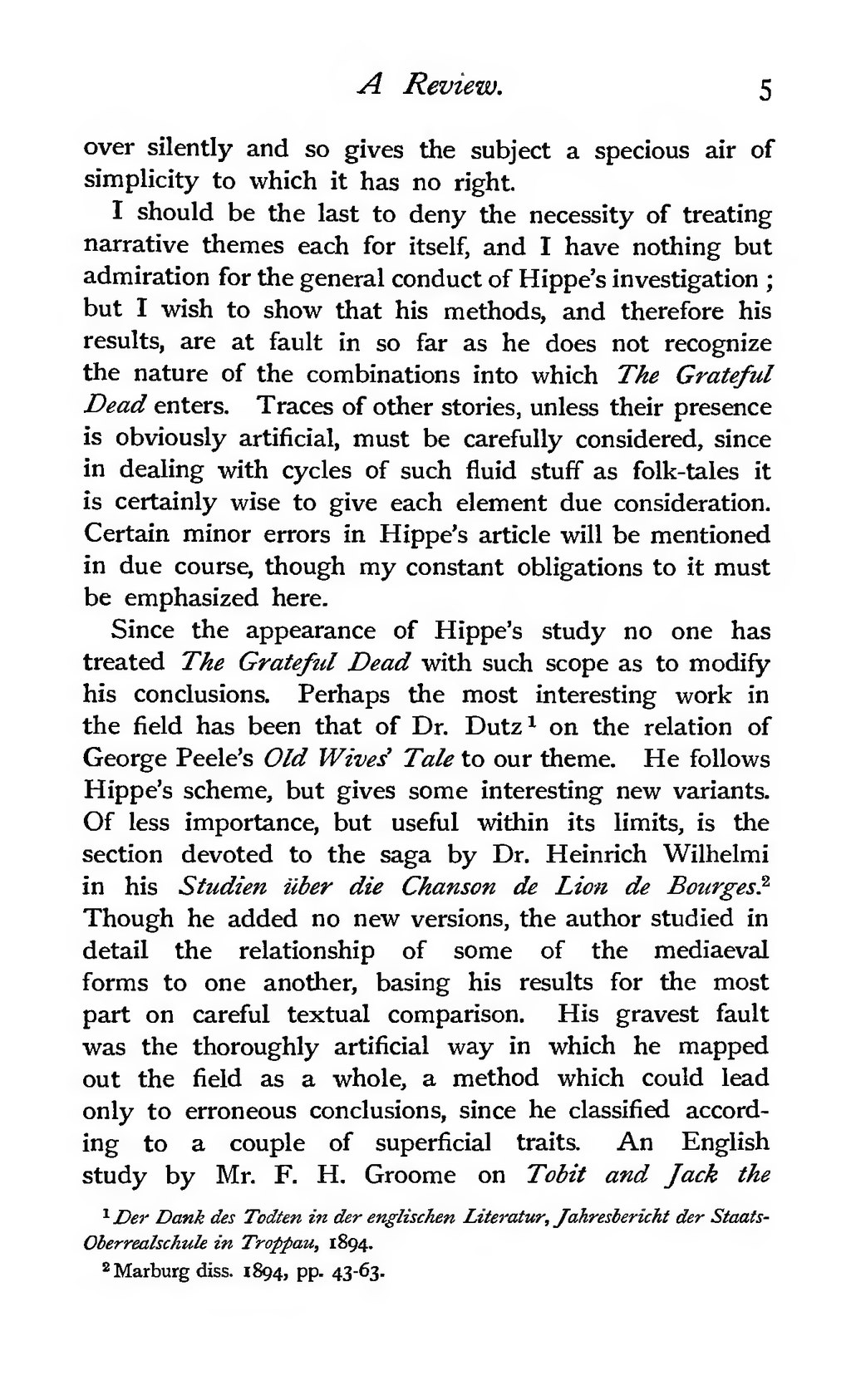over silently and so gives the subject a specious air of simplicity to which it has no right.
I should be the last to deny the necessity of treating narrative themes each for itself, and I have nothing but admiration for the general conduct of Hippe's investigation; but I wish to show that his methods, and therefore his results, are at fault in so far as he does not recognize the nature of the combinations into which The Grateful Dead enters. Traces of other stories, unless their presence is obviously artificial, must be carefully considered, since in dealing with cycles of such fluid stuff as folk-tales it is certainly wise to give each element due consideration. Certain minor errors in Hippe's article will be mentioned in due course, though my constant obligations to it must be emphasized here.
Since the appearance of Hippe's study no one has treated The Grateful Dead with such scope as to modify his conclusions. Perhaps the most interesting work in the field has been that of Dr. Dutz[1] on the relation of George Peek's Old Wives' Tale to our theme. He follows Hippe's scheme, but gives some interesting new variants. Of less importance, but useful within its limits, is the section devoted to the saga by Dr. Heinrich Wilhelmi in his Studien über die Chanson de Lion de Bourges.[2] Though he added no new versions, the author studied in detail the relationship of some of the mediaeval forms to one another, basing his results for the most part on careful textual comparison. His gravest fault was the thoroughly artificial way in which he mapped out the field as a whole, a method which could lead only to erroneous conclusions, since he classified according to a couple of superficial traits. An English study by Mr. F. H. Groome on Tobit and Jack the
